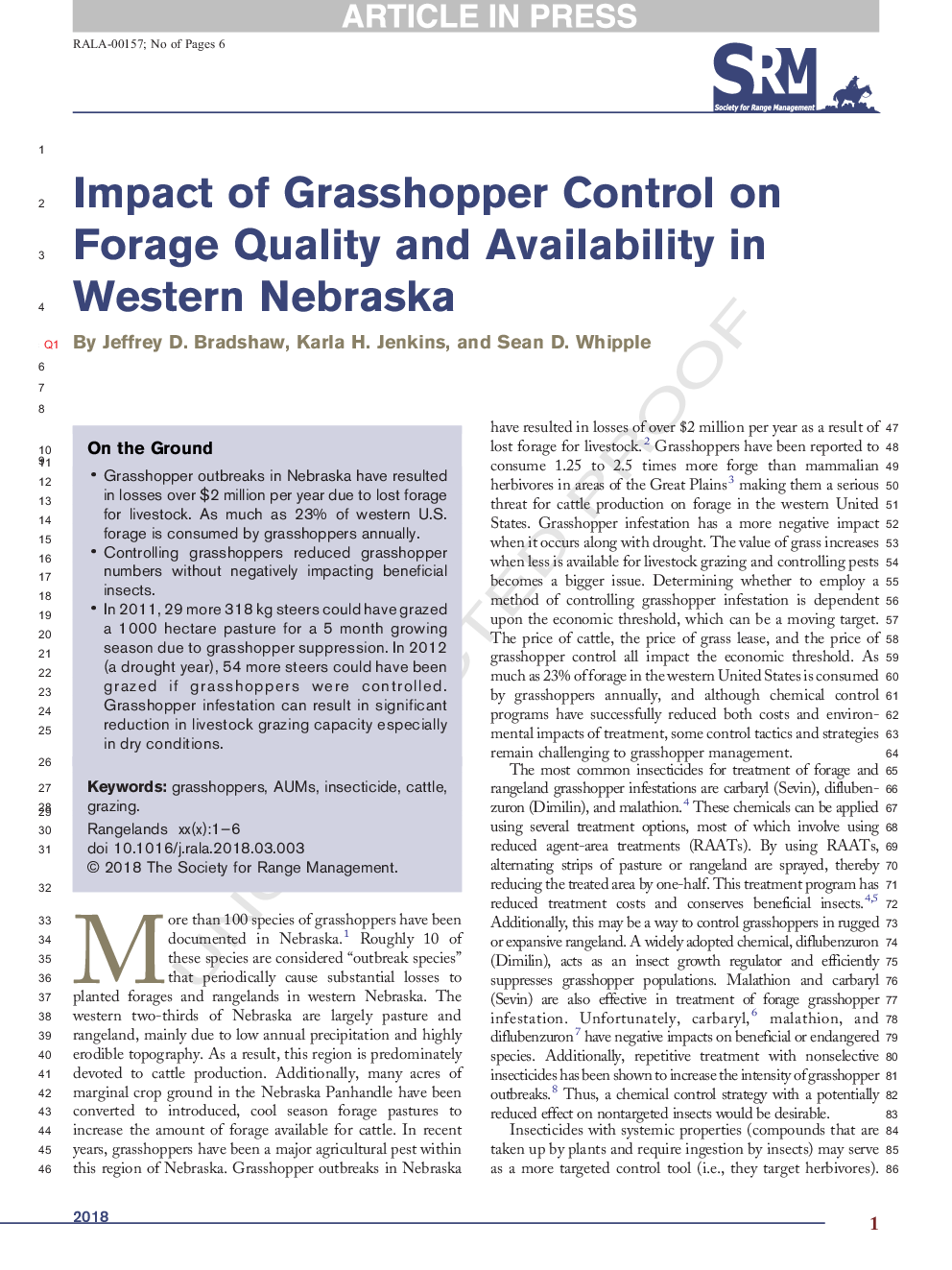| Article ID | Journal | Published Year | Pages | File Type |
|---|---|---|---|---|
| 8849661 | Rangelands | 2018 | 6 Pages |
Abstract
On the Ground
- Grasshopper outbreaks in Nebraska have resulted in losses over $2 million per year due to lost forage for livestock. As much as 23% of western U.S. forage is consumed by grasshoppers annually.
- Controlling grasshoppers reduced grasshopper numbers without negatively impacting beneficial insects.
- In 2011, 29 more 318 kg steers could have grazed a 1000 hectare pasture for a 5 month growing season due to grasshopper suppression. In 2012 (a drought year), 54 more steers could have been grazed if grasshoppers were controlled. Grasshopper infestation can result in significant reduction in livestock grazing capacity especially in dry conditions.
- Grasshopper outbreaks in Nebraska have resulted in losses over $2 million per year due to lost forage for livestock. As much as 23% of western U.S. forage is consumed by grasshoppers annually.
- Controlling grasshoppers reduced grasshopper numbers without negatively impacting beneficial insects.
- In 2011, 29 more 318 kg steers could have grazed a 1000 hectare pasture for a 5 month growing season due to grasshopper suppression. In 2012 (a drought year), 54 more steers could have been grazed if grasshoppers were controlled. Grasshopper infestation can result in significant reduction in livestock grazing capacity especially in dry conditions.
Keywords
Related Topics
Life Sciences
Agricultural and Biological Sciences
Agricultural and Biological Sciences (General)
Authors
Jeffrey D. (Associate Professors), Karla H. (Associate Professors), Sean D. (Post Doctoral Student),
